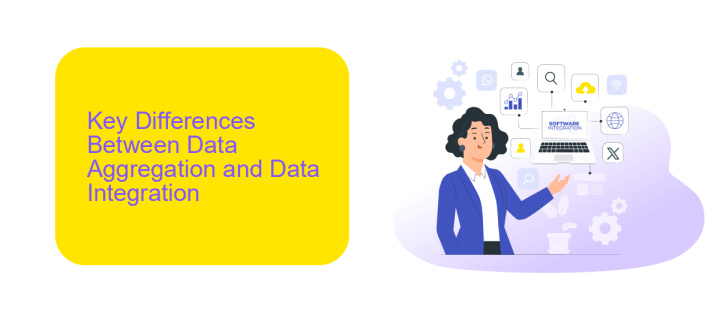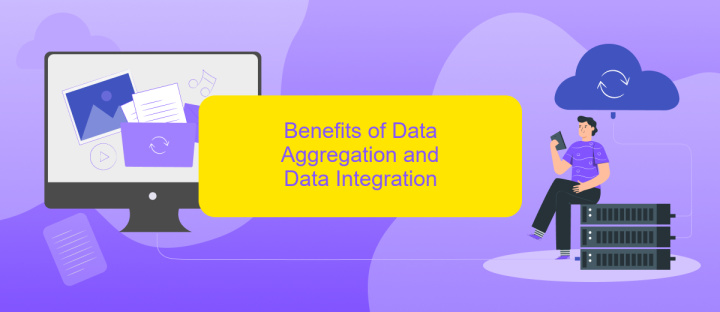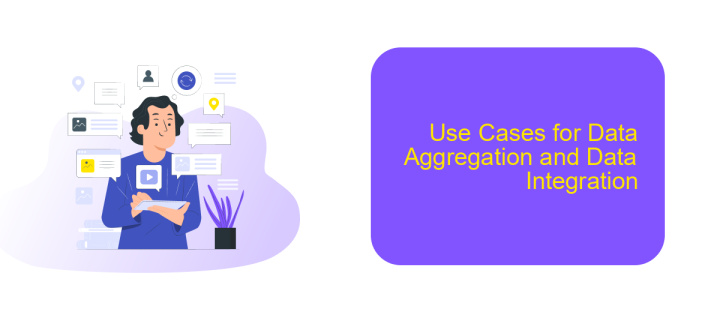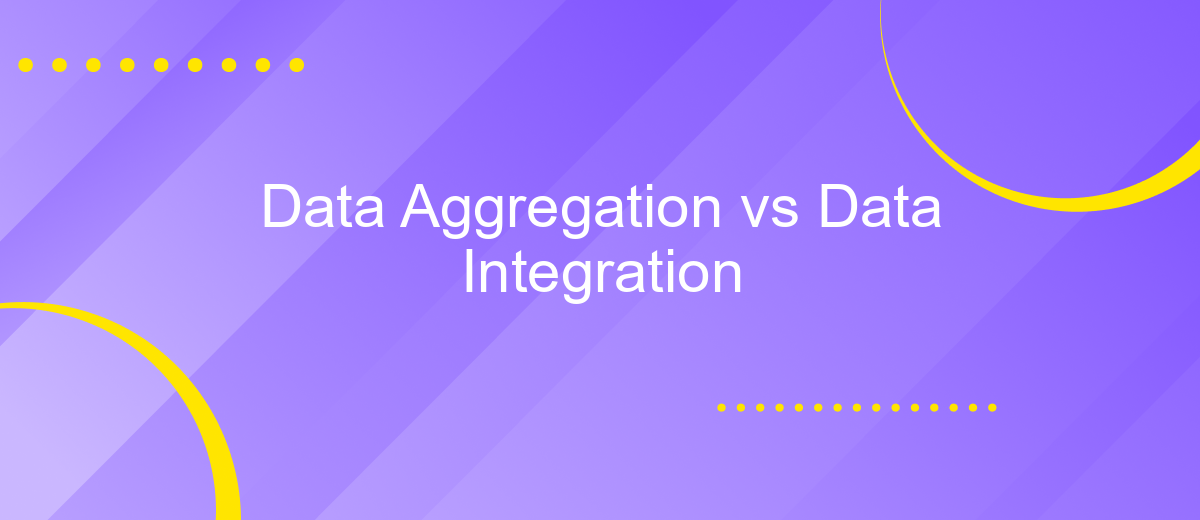Data Aggregation vs Data Integration
In the era of big data, businesses are increasingly relying on data-driven insights to make informed decisions. Two key processes that play a crucial role in managing and utilizing data are data aggregation and data integration. While both aim to streamline and enhance data usability, they serve distinct purposes and offer unique benefits. This article explores the differences and synergies between data aggregation and data integration.
Data Aggregation vs. Data Integration: An Overview
Data aggregation and data integration are two pivotal processes in data management, each serving distinct purposes. Data aggregation involves collecting and summarizing data from multiple sources to provide a comprehensive view. This process is often used for reporting and analysis, allowing businesses to derive insights from large datasets. On the other hand, data integration focuses on combining data from different sources into a single, unified system, ensuring consistency and accessibility across the organization.
- Data Aggregation: Summarizes data for analysis.
- Data Integration: Combines data for consistency.
- Purpose: Aggregation for insights, integration for accessibility.
While data aggregation simplifies data for analysis, data integration ensures that all data sources are harmonized and accessible. Tools like ApiX-Drive facilitate seamless data integration by connecting various applications and automating data workflows. This ensures that businesses can maintain data integrity and streamline operations, making it easier to leverage data for strategic decision-making.
Key Differences Between Data Aggregation and Data Integration

Data aggregation involves collecting and summarizing data from multiple sources to provide a unified view. This process is primarily focused on compiling data, often from various databases or datasets, to generate reports, statistics, or insights. Aggregation is typically used for data analysis, enabling organizations to make informed decisions based on comprehensive datasets. The key aspect of data aggregation is its emphasis on the consolidation of data points to create meaningful summaries or overviews.
Data integration, on the other hand, is the process of combining data from different sources to create a cohesive dataset that can be used across various applications and systems. This involves not just collecting data, but also transforming and harmonizing it to ensure consistency and usability. Tools like ApiX-Drive facilitate data integration by automating the process of connecting and syncing data between different platforms. Unlike data aggregation, integration focuses on the seamless and continuous flow of data across systems, ensuring that all parts of an organization have access to the same, up-to-date information.
Benefits of Data Aggregation and Data Integration

Data aggregation and data integration are essential processes for businesses aiming to harness the full potential of their data. By combining and organizing data from various sources, organizations can gain deeper insights, improve decision-making, and enhance operational efficiency.
- Improved Decision-Making: Aggregated and integrated data provides a comprehensive view, enabling more informed and accurate business decisions.
- Enhanced Data Quality: Integrating data from multiple sources helps identify and rectify inconsistencies, ensuring higher data quality.
- Operational Efficiency: Streamlined data processes reduce redundancy and save time, allowing for more efficient operations.
- Scalability: Both data aggregation and integration can be scaled to meet the growing needs of an organization, supporting long-term growth.
- Cost Savings: Efficient data management reduces the need for manual data handling, resulting in significant cost savings.
Services like ApiX-Drive facilitate seamless data integration by automating the connection between various applications and platforms. This not only simplifies the integration process but also ensures that data flows smoothly across systems, enhancing overall business performance.
Use Cases for Data Aggregation and Data Integration

Data aggregation involves collecting and summarizing data from multiple sources to provide a comprehensive view. This technique is commonly used in business intelligence to generate reports and dashboards that help in decision-making. For instance, companies often aggregate sales data from different regions to analyze overall performance and identify trends.
On the other hand, data integration focuses on combining data from different sources into a unified system. This is essential for creating a single source of truth, ensuring consistency and accuracy across various applications. Data integration is crucial for enterprises that rely on multiple software systems to manage their operations efficiently.
- Data Aggregation: Market analysis, financial reporting, customer insights.
- Data Integration: CRM and ERP synchronization, real-time data access, unified data platforms.
For seamless data integration, services like ApiX-Drive offer robust solutions to connect various applications without the need for extensive coding. By automating data flows between different systems, ApiX-Drive helps businesses save time and reduce errors, making it easier to maintain data integrity and streamline operations.
- Automate the work of an online store or landing
- Empower through integration
- Don't spend money on programmers and integrators
- Save time by automating routine tasks
Choosing the Right Solution for Your Needs
When determining whether to use data aggregation or data integration, it's important to consider your specific business needs and objectives. Data aggregation is ideal for scenarios where you need to compile data from multiple sources into a single, unified view for analysis. This method is particularly useful for generating reports, monitoring trends, and making data-driven decisions. On the other hand, data integration is essential when you need to combine data from different systems to create a seamless workflow. It ensures that information flows smoothly between various applications, enhancing operational efficiency and reducing manual work.
For businesses looking to streamline their data processes, tools like ApiX-Drive can be invaluable. ApiX-Drive allows you to set up integrations between different services without requiring extensive technical knowledge. This platform supports a wide range of applications, enabling you to automate data transfer and synchronization effortlessly. Whether you need to aggregate data for comprehensive reporting or integrate systems for improved workflow, choosing the right solution will depend on your specific goals and the complexity of your data environment.
FAQ
What is data aggregation?
What is data integration?
How do data aggregation and data integration differ?
Why is data integration important for businesses?
What tools can help with data integration and automation?
Do you want to achieve your goals in business, career and life faster and better? Do it with ApiX-Drive – a tool that will remove a significant part of the routine from workflows and free up additional time to achieve your goals. Test the capabilities of Apix-Drive for free – see for yourself the effectiveness of the tool.


